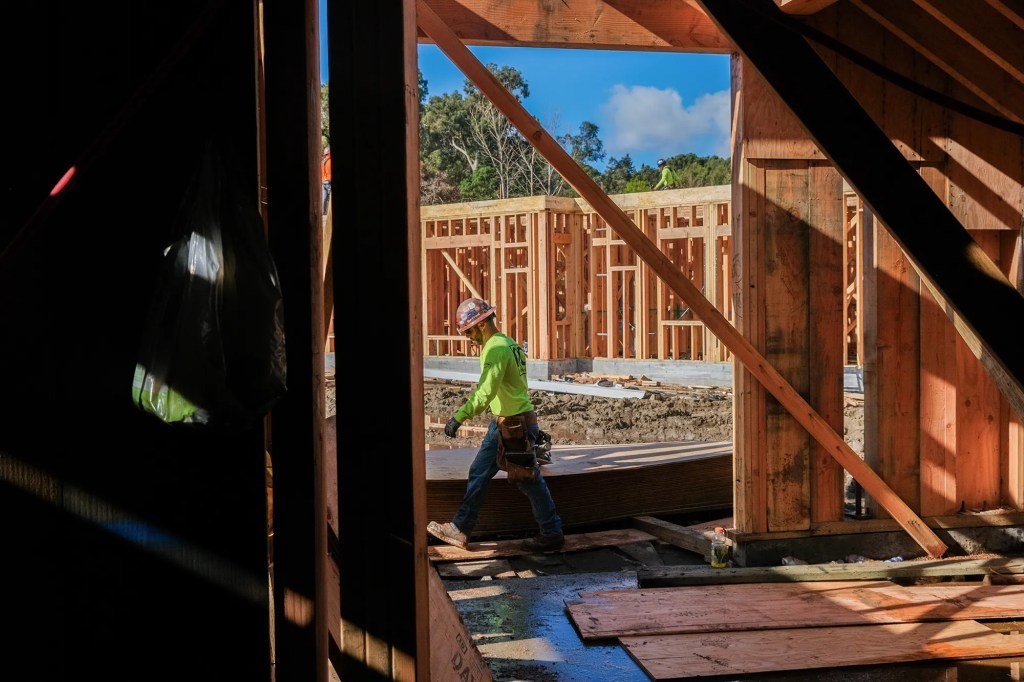When You Imagine a Renter of Affordable Housing, Think Again: The Tale of Christopher McCormick
As he sipped his morning coffee, Christopher McCormick couldn’t shake the nagging sensation that something fundamental was amiss in the world of housing. Just months before, he had stumbled upon an affordable housing development in Emeryville, California, that seemed to defy the conventionally held image of what affordable housing looked like—at least for someone like him. With an income of $79,400 a year, McCormick had found himself among the ranks of a demographic that the state aimed to assist, yet felt oddly mismatched with. His journey into the realm of below-market-rate housing would reveal not just his own challenges but the broader complexities shaping the future of housing in California.
The Quest for Moderate-Income Housing
In California, where housing has become synonymous with unsustainable costs, the state has launched an ambitious initiative to construct 2.6 million new housing units by 2032, addressing the urgent need for affordable options. Of these, nearly 421,000 are aimed specifically at moderate-income households—those earning between 80% and 120% of the area’s median income. Yet, as McCormick’s experience suggests, middle-income housing often remains an elusive target.
“Moderate-income families like Christopher are the backbone of our economy,” says Dr. Linda Garvey, a housing policy expert at the University of California. “Yet, they are often left out of the conversation, which tends to focus on either low-income or high-end luxury housing.” The irony is stark: the market appears to gravitate towards rental apartments that generate more steadier cash flow while largely ignoring the moderate-income demographic.
Current Landscape: Insufficient Solutions
- Only 22,316 moderate-income units built in five years.
- Many proposals aimed at incentivizing builders have failed to advance.
- Current policies often target rental housing over homeownership.
Recent legislative efforts aimed at reforming this imbalance have stalled amidst California’s budget shortfall, leading to a political gridlock. For instance, Senate Bill 336 proposed tax exemptions for those building for moderate-income renters but ultimately fell victim to fears about diminishing state revenues.
“It’s maddening,” notes housing developer Rich Wallach. “We need structural changes that genuinely incentivize creating a meaningful number of affordable units that folks can actually afford.” According to a hypothetical study by the California Housing Institute, if targeted tax incentives were structured more effectively, it could potentially double the number of viable moderate-income housing options within a decade.
The Fate of Homeownership
While the focus has primarily been on rental units, the option for moderate-income families to purchase homes has all but diminished, leaving many like McCormick disillusioned. Faced with an untenable rental market, he eventually decided to leave California altogether for suburban Pittsburgh, Pennsylvania, where he traded a $2,100 rent for a five-bedroom house costing him only $2,800 a month in mortgage payments.
“When you rent, the landlord is building wealth at your expense,” McCormick lamented. “I realized I needed to invest in myself.” His experience illustrates a broader trend where families not only seek housing but also the economic stability that comes with property ownership. Adam Briones, CEO of California Community Builders, argues that “homeownership is crucial for building generational wealth and stability in communities.”
Future Directions: Balancing Rent vs. Own
Experts like Alex Schafran urge a reevaluation of current housing policies, arguing that a lack of balance between rental and ownership options might further isolate middle-income families. “Right now, home-buying is almost exclusively for high earners, leaving a vacuum for moderate earners,” he stated. “We should be working towards an ecosystem that supports both renting and owning.”
This sentiment aligns with a growing body of thinking that champions a more nuanced approach to housing policy. “What we need is flexibility,” notes Garvey. “Incentivizing both types of housing can be a win-win for state planners and communities alike.”
The Key Takeaway
The complexities of California’s housing landscape are both historically rooted and future-focused. As the state races against time to meet its ambitious housing goals, finding a way to equitably support both rental and homeownership options is critical. The story of Christopher McCormick ultimately serves as a microcosm for a much larger debate: Who gets to call California home, and at what cost? As policymakers grapple with these questions, the fates of thousands of families like McCormick’s hang in the balance, illustrating that the quest for affordable housing in California is far from over.









